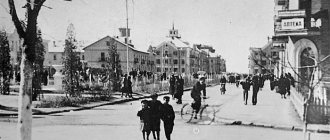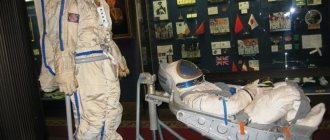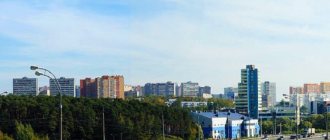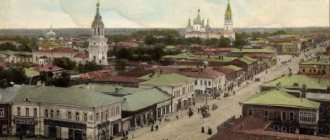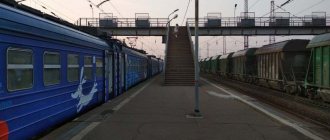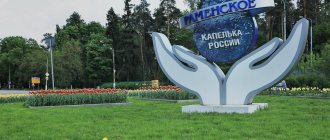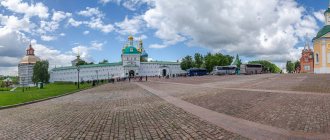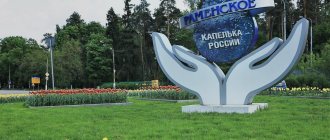Shchelkovo is a city in the northeast of the Moscow region. Located just 15 km from the Moscow Ring Road near the Klyazma River. It is the administrative center of the Shchelkovsky district. The area of the city is 52 square kilometers. The population of Shchelkovo is about 125 thousand people. Shchelkovsky district is one of the most prosperous in the Moscow region. Accordingly, the employment of the population of Shchelkovo is quite high.
City `s history
The first mention of a village with the name Shchelkovo dates back to 1521 - 1522. By the beginning of the 19th century, Shchelkovo became the economic core of the territory. This city has become the center of the Shchelkovsky district since 1929. Industry was actively developing there. This process proceeded most rapidly during the Soviet period. It still remains an industrial center, although on a somewhat smaller scale than in Soviet times. In recent decades, trade and services have been actively developing here. There are also opportunities to choose different work options.
General information and history of Shchelkovo
In the northeast of Moscow there is a highway called “Shchelkovskoye”, as well as the final station “Shchelkovskaya” of the blue metro line. Everyone knows the highway and the station, but not everyone knows the city after which they are named. Shchelkovo is located on both banks of the ancient Klyazma River and has gathered towns and villages around it, forming one of the most economically prosperous areas of the Moscow region.
Unfortunately, no historical documents have survived from which it would be possible to determine the origins of the name of the city. But according to one version, the city owes this name to the Krivichi tribes, who during the times of Ancient Rus' settled on one of the banks of the Klyazma. Near the city of Uglich, where the Krivichi also lived, a river flowed, which in our time has already dried up; its name was Shchelkovo.
The first mention of the village of Shchelkovo in surviving documents dates back to the 16th century. And since 1917, the village became the administrative center and a few years later the Shchelkovo volost was formed. Since 1925, Shchelkovo has received the status of a city, so this year is considered the date of its foundation.
Old Shchelkovo
The city rapidly developed as an industrial center. Since ancient times, a silk weaving factory operated there; the heyday of the enterprise occurred in Soviet times. After the collapse of the USSR, some factories were closed, but today large industrial enterprises operate successfully in the city. In addition, the trade and service sector is rapidly developing in Shchelkovo, therefore, the choice of place to work is quite wide.
Climate and geographical features
The climate of the region is determined by the location of the city in the middle zone of the European territory of Russia. The average temperature in February is -13 degrees, and in July - +23 degrees. Although the winter is relatively cold, by Russian standards it can be considered moderate. Summer is comfortable, without extreme heat or cold.
The terrain is flat, sometimes slightly hilly. There are many rivers, forests and small lakes in the area. Including, they enter the territory of the city of Shchelkovo. The largest are the Bear Lakes. There are also a large number of springs with clean drinking water. There are artificial ponds on the site of former quarries.
Sights of Shchelkovo: TOP-5
Among all the interesting things that a traveler will see in Shchelkovo, several attractions should be highlighted. They are considered the calling cards of the city.
Almazovo Estate
- Address: Almazovo village. Transport stop "Dachi Almaz".
Just 5 km from the center of Shchelkovo, which is easy to overcome by bus or car, there is a wonderful architectural monument of the 18th century. - a magnificent noble estate, bearing the name of one of the first owners of the estate. The buildings of the complex have been beautifully restored. The dominant feature of the architectural ensemble is the Church of St. Sergius of Radonezh, built in the style of classicism. No less interesting is the noble mansion itself with a semi-portico supported by two massive columns. In addition, two more buildings have survived to this day - outbuildings where servants once lived.
Memorial "In Memory of the Fallen"
- Address: st. Starokhotovskaya. Transport stop "Khotovo".
Among the iconic sights of Shchelkovo, without a doubt, is the memorial complex in honor of the fallen heroes of the Second World War. The grand opening of the historical and architectural object was timed to coincide with the 60th anniversary of the great Victory. The composition consists of two concrete semicircular colonnades, between which is placed the bowl of the Eternal Flame. White columns rise above a base lined with red granite. The memorial looks very solemn. Townspeople come here to honor the memory of the liberating soldiers who gave their lives for their homeland.
Sundial Park
- Address: Seraphim Sarovsky embankment. Transport stop "Market".
The most beautiful walking recreation in Shchelkovo is located between Proletarsky Prospekt and Sovetskaya Street. Here, along the banks of the Klyazma, a pedestrian zone has been created, passing through a unique park that has no analogues in Russia. Slowly walking along the promenade, tourists and townspeople admire the colorful sculptures, bright flower beds, and well-groomed flower beds. But the main highlight of the park is the vertical and horizontal Sundial, by which even a child can easily determine the time in clear weather.
Radio telescope RT-64
- Address: village of Medvezhye Lakes. Transport stop "Bear Lakes".
To see another iconic landmark of Shchelkovo, you need to make a short trip to the village of Medvezhye Lakes, located in the vicinity of the city. The Space Communications Center has been operating here since 1958. One of its main elements is a huge radio telescope. The structure, put into operation in the summer of 1979, is impressive in size. The total mass of the radio telescope is close to 3.8 thousand tons, and the weight of the dish mirror is 800 tons. Every 20 minutes, the giant antenna bowl rotates around the vertical axis. The spectacle is amazing.
Lenin Square
- Address: Intersection of Parkovaya and Komarova streets. Transport stop "Ploshchad".
Shchelkovo can be considered a unique city, if only because there is only one square. Agree, for a policy that is quite large by the standards of the Russian province, such a fact cannot be considered commonplace. Nevertheless, it is true. According to Soviet tradition, the main recreation area, where the most important public events are held, is named after Lenin. In addition to the permanent monument to the leader of the world proletariat, the landscape and architectural ensemble includes modern municipal buildings, the Aurora cinema, the mansions of the old Post Office and the Local History Museum, erected at the beginning of the last century according to the canons of classicism. The fountain area adds a touch of romanticism to the solemn surroundings of the square.
Ecological situation
In the city of Shchelkovo there are several enterprises that are a source of environmental pollution. Sewage treatment plants also contribute to pollution. Due to the work of enterprises, the Klyazma River has become undrinkable.
In the Shchelkovsky district itself, the environmental situation is much better. A large number of forests also helps purify the air. The water in the springs is clean and suitable for drinking.
Shchelkovo · milestones of history
Where our region is now located, in ancient times there was a shallow but large sea that appeared and disappeared following the rise and fall of the ancient East European (Russian) platform. The time has come when the sea disappeared forever, freeing up territories for future human habitation. Once upon a time, glaciers moved across these lands. It is believed that people first settled in our area during the Neolithic (New Stone Age); their settlements belong to the Fatyanovo culture (Bronze Age). The first human dwellings appeared in the region of the Bear Lakes, and their inhabitants were representatives of the ancient Merya-Ugric-Finnish tribes. Most likely, it is to them that we owe the fact that the main rivers of our region - the Klyazma and Vora - received their names. Then, representatives of other tribes, already East Slavic - the Vyatichi and Krivichi, settled on the lands of the modern Moscow region; the time of settlement was the second half of the 1st millennium AD. The Krivichi came to this land from the north-west, the Vyatichi came here from the south-west. A message has survived to this day that Monomakh conveyed to his children, who once traveled to Rostov from Kyiv, as he put it, “through the Vyatichi” - it is one of the evidence of the presence of this tribe.
Our fellow countryman, famous archaeologist A.A. Konovalov established that representatives of both tribes were separated by the Klyazma - it became a conditional border. Along its banks, burial mound groups - traces of ancient settlements - have been preserved in large numbers to the present day. You can see especially many of them near Uglich. There was a river flowing near the city Kremlin, which is now almost overgrown. it Shchelkovo
, and not far from Uglich there is a village of the same name. But it is not the only one of its kind: the village of Shchelkovka can be found at some distance from Mozhaisk. It is possible that it was thanks to the Krivichi that our area got its name - this is one of the versions of its origin. Alas, there are no historical documents that shed light on the origin of the name “Shchelkovo”.
Later, on the Vorya River, in its middle course, a settlement of the same name was formed. When the Moscow prince Ivan Kalita began to rule, this area received the status of a volost, part of the Moscow district, and after some time Vorya began to be called a camp. The will of Prince Ivan Danilovich Kalita, dating back to 1327, is recognized as the earliest documentary mention of our territories. Very, very few such archival documents have survived, and we are mainly talking about spiritual letters left by the great princes.
The village of Shchelkovo in written documents
It was first mentioned in the 16th century, or more precisely, in 1521-22: the will of its owner, boyar I.F. Khomutov, transferred the settlement into ownership of the Trinity-Sergius Lavra. A written source dating back to 1584 mentions this village along with other 45 villages that made up the village. Grebnevo is the property of the family nobleman B.Ya. Belsky, okolnichy, associate of Ivan the Terrible. At that time, Shchelkovo consisted of 32 acres of land, of which 20 remained uncultivated.
A difficult time for the Moscow region was the confrontation between the Swedes and Poles that lasted for many years. After the Livonian War, our lands, and the northeastern part especially, were devastated to the ground. Shchelkovo, located near the Khomutovskaya road, also did not escape a sad fate. Since 1611, Grebnevo was the property of the State Treasury, and later Prince D.T. Trubetskoy, a prominent political figure of the early 17th century, a major military and statesman, received it at his full disposal. The Trubetskoy family owned Grebnevo until 1781.
The 17th and 18th centuries were a time when villages were strengthened and the population concentrated in them. In the 50s of the 18th century, the village of Grebnevo was formed by a number of villages, among which were Sloboda, Chizhovo, Novaya, Nazimikha, Trubino, Fryazino, Shchelkovo, and the village of Toporkovo. The population of the village was 1269 people, among whom there were 622 representatives of the stronger sex. In total, there were 220 households here, although in Grebnevo itself there were no peasant households at that time.
The starting point for a new stage in the development of local lands was the Decree issued in 1769, according to which peasants received the right to industrial activity. At the end of the same year, the manufactory board gave the official right to produce “various silk fabrics and scarves” to one and a half dozen serfs from the village of Grebnevo. They were the first recipients of such permission in the entire country and became the founders of the handicraft production of silk fabrics, one of the largest and earliest. Of the fifteen aforementioned serfs, 12 people were residents of Shchelkovo. In the then village there were twenty-seven households, and the population was 153 people (79 men), and in this small settlement 33 silk weaving mills were formed. As of 1797, in Shchelkovo there were already 100 mills in eight peasant silk-weaving establishments, where a hundred workers worked, 98 of whom were civilians. By the end of the century Shchelkovo
and the districts became the place where 63% of peasant industrial production was located on the province scale and 71% on the district scale.
Production was represented not only by peasant enterprises. Thus, the Scribe books of the 16th century contain a mention of a noble possessional alkali weaving factory operating in Fryanovo, the number of workers at which was hundreds of people. The volume of output in its value terms eloquently indicated that in Shchelkovo and the district, agricultural production was clearly inferior to industrial production. Employment in industry became the main source of income for residents of a large number of villages and villages.
There were also changes related to the administrative-territorial division. The villages and lands that were part of Grebnevo from Shchelkovo to Trubin in 1781 became the property of another family - the Bibikovs. After the large Moscow province was formed in 1775, consisting of Bogorodsky, Voskresensky, Bronnitsky, Podolsky and Nikitinsky districts, our territories began to be considered Bogoroditsky district. Its center was in the village of Rogozhi, which later turned into the city of Bogorodsk, and even later (in 1930) - into Noginsk. Until 1922, the Bogorodsky district included lands that now belong to the Shchelkovsky district, Pavlovo-Posadsky, Noginsky, and also (partially) to some other areas.
The beginning of the 19th century was marked by aggravation of relations between Russia and France, and this affected the peasant silk weaving industry, since it used French and Italian raw materials. After a period of decline and victory over the French troops, industry began to gain momentum again. At this time, the handicraft establishment of M.K., which moved to Shchelkovo in 1784, turned into a real factory. Kondrashova. In the field of silk production, this manufactory was recognized as, as they would say now, a leading enterprise. Thanks to her, the Shchelkovo district received a very flattering comparison with the French Lyon district, which had the status of the center of the silk industry of its country. Products produced by the factory received gold medals in 1827 and 1829. In 1835, the production received a large gold manufacturing medal; in 1841, the collection of awards was supplemented by the medal of the Warsaw Manufacturing Exhibition.
In 1832, another event occurred that influenced the further development of the region. The Prussian subject Ludwig Rabeneck partially bought the village of Sobolevo, which belonged to a landowner named Durnovo. A year later, here, on the right bank of the Klyazma, in its bend, a yarn-dying establishment grew up, permission to organize which was issued by the tsarist government. It became the first in the country. When management passed to the owner's sons, the enterprise became even larger in scale, and soon it became one of the largest in its province. In just a few decades from the opening day, a natural, organic merger of the yarn-dying factory and the surrounding areas with Shchelkovo took place.
As of 1859, the population of Meshchanskaya Sloboda was 317 people living in 40 households. Local enterprises underwent a variety of organizational and structural changes during this period. So, in 1879, instead of the factory of the Rabeneck brothers, the Ludwig Rabeneck Manufactory Association appeared. This association, based on shareholder law, was named in honor of the man who once became the founding father of production. Polyakov’s factory also underwent reorganization, which in 1894 became the Partnership of Dyeing and Finishing Factory in the village of Shchelkovo. Currently it is known as a technical fabrics factory. The more industrial development developed, the more urgent the need for a well-organized transport system became. By the end of the century, the Shchelkovo branch of the Northern Railway was opened. The emergence of railway communication on the Aleksandrov-Ivanovo section made it impractical to maintain the Stromynskaya road, starting from Aniskin, for the sake of the only factory in Fryanovo. Therefore, 1897 was marked by the construction of the Novokhmutovsky tract, which overlooked the Stromynskaya road and connected such settlements as Fryanovo, Nazimikha, Grebnevo, Sloboda and Aniskino.
The Shchelkovsky district was formed gradually
. With the establishment of Soviet power in 1917, the village of Shchelkovo turned into an administrative center, which included Grebnevskaya, Oseevskaya, Aksenovskaya and Ivanovskaya volosts, which previously belonged to Bogorodsky district. The resolution of the Moscow Council of December 9, 1921 proclaimed the formation of the Shchelkovo volost of the Moscow district, which included Grebnevskaya and Oseevskaya. The Shchelkovsky district in its northern part continued to belong to the Bogorodsky district. In comparison with other volosts, its territory and number of inhabitants were almost four times larger, and the status of the volost created certain difficulties in managing it from the point of view of law, finance, and economics. On May 21, 1923, the Moscow District Council of Workers, Peasants and Red Army Deputies decided to assign Shchelkovo the status of an urban-type settlement. During this period, significant progress was noted in the educational sphere. There were 4,082 students in 36 schools in the district, taught by 113 teachers. To eliminate illiteracy (in the region the number of registered illiterates was 3 thousand), 8 schools were opened, in which 450 people had the opportunity to study. The commercial school trained specialists, which later became a second-level school; Future statisticians, bookkeepers, accounting clerks, and registrars learned the basics of the profession at industrial and economic courses. The opening of the peat technical school took place.
Statistics say that on September 1, 1923, the Shchelkovo volost consisted of 71 settlements, 3,880 households. 33,441 inhabitants lived here. The village of Shchelkovo consisted of 203 courtyards with 9,944 residents, and in the village of the same name, 594 people lived in 130 courtyards. The village of Shchelkovo became a city on August 17, 1925. Within the city limits were the right bank of Shchelkovo, which in pre-revolutionary times was called Meshchanskaya Sloboda, Sobolevo, part of the village of Shchelkovo, where the dyeing and finishing factory was located, as well as the village of Khomutovo (partially) with a silk weaving factory.
January 1929 is a new milestone in history: this month a new area with an area of more than 807 sq. km appeared in the northeast of the Moscow region. — Shchelkovsky, the center of which became the city of Shchelkovo
. In the early 30s, a number of villages that previously belonged to the Aksenovskaya and Ivanovskaya volosts became part of the Noginsk region; some villages, previously considered part of the Pekhorskaya and Morozovskaya volosts, were assigned to the Shchelkovsky district. In 1954, on August 12, Shchelkovo became a city of regional subordination.
As soon as the Great Patriotic War began, all of Shchelkovo joined the fight against the Nazi invaders
. After completing the formation of the people's militia battalion, he joined the 3rd regiment of the 4th Moscow militia division of the Kuibyshev region. Residents of Shchelkovo, as part of the division, went through many trials and combat operations: the battles for Vereya and Vyazma, the battle of Borovsk, the liberation of Belarus, the capture of Konigsberg and Pillau. A destroyer battalion was also organized. The heroism and courage of the residents of the Shchelkovsky district were appreciated by government awards at various levels. I.I. Ivanov, A.G. Dudkin, N.N. Tyavkin, P.I. Tsyganov, B.V. Mikhalev, P.T. Muzhetsky were awarded the title of Hero of the Soviet Union.
The post-war, fifties were marked by active restoration and transformation. The roads in the city became paved and wide, and on both sides of them numerous high-rise buildings and shopping facilities grew up. Social and cultural facilities and the improvement of territories were not forgotten. In honor of the 40th anniversary of the Great October Revolution, a spacious park was laid out, and the city was decorated with squares and alleys. Since 1958, Shchelkovo residents have had the opportunity to relax and realize their creative abilities in the new Palace of Culture.
The beginning of the market economy period brought great changes to Shchelkovo. Residential high-rise buildings are being actively built, but in the memory of older generations the city remains imprinted mainly as a one-story one. Consumers can make purchases in large stores Eldorado, Hyperglobus, Atak. Local branches have appeared at well-known pharmacy chains (Apteka 36.6), banks - Sberbank, Sovcombank, Vozrozhdenie, Bank of Moscow, Nomos. The list of public catering establishments has expanded to include new cafes and fast food restaurants “McDonald’s” and “Esh”. People leading an active lifestyle can exercise in a renovated stadium near the Shchelkovo station.
Today Shchelkovo is the center of one of the largest industrial areas in the Moscow region. The district consists of three urban-type settlements (Monino, Fryanovo, Sverdlovsky) and 11 rural districts; in total it consists of more than a hundred settlements. Losino-Petrovsky and Fryazino, cities of regional subordination, are also located here.
In Shchelkovo, work continues on the construction and reconstruction of residential and other buildings, landscaping, and expanding the material and technical base in a variety of areas - education, healthcare, culture. In order for Shchelkovo residents to have good conditions both for work and for cultural, rich recreation, to lead an active lifestyle, playing sports and physical education, to satisfy all their needs as consumers of goods and services, appropriate events are constantly being held to make the city even more landscaped and meeting modern requirements.
Valentina LISOVAYA is the director of the regional museum of history and local lore.
Population
Shchelkovo is a medium-sized city. The population of Shchelkovo is 116 thousand people. By nationality, Russians predominate in the city. In second place are the Tatars. By religion, Orthodox Christians dominate, but the share of Muslims is also quite significant. There is a Tatar community in the city. The total population has been trending upward, but growth has slowed sharply since 1990 and has become unsustainable over time.
In addition to long-established residents, there is a considerable share of visitors from neighboring countries. This situation is typical for the Moscow region. Some of them even climb the career ladder and develop their own businesses. In general, the population of the city is quite friendly.
Proximity to Moscow determines a large share of the middle class and higher incomes than in the country as a whole. There are few who are very poor, but there are also few who are too rich. The level of education is high among all segments of the population. In most cases, you can get a higher education without leaving the city.
In Soviet times, the main backbone of the population were representatives of the working class. As the service sector developed, the specialization of the population became more diverse. At the same time, the focus on industrial production still remains. In this regard, Shchelkovo differs from such towns near Moscow as Fryazino, which has a larger share of the intelligentsia and a more developed sphere of science, education and art.
Shchelkovo is also associated with the names of famous cosmonauts.
Crime
In the 90s, in Shchelkovo, as in many Russian cities, chaos was happening. Murders, robberies and robberies were commonplace. Today the situation is much better. Of course, various domestic and other crimes are committed today, but not at every step. The crime situation is not covered in too much detail in the local, much less in the federal media. Ordinary residents should be wary of hooligans and thieves - young people looking for funds to buy drugs, as well as particularly evil-minded guests from neighboring countries.
However, those who want to do business here should collect as much information as possible on the topic of various groups, since there are enough of them in the city and they will not leave businessmen without the attention. If you start your own business here without good knowledge in this matter and the presence of relevant acquaintances, be prepared for the fact that you will be bothered from time to time.
Shchelkovo Employment Center
The Employment Center (GKU MO Shchelkovsky TsZN) was formed on January 30, 2001. It serves residents of the Shchelkovsky district, including Zvezdny Gorodok, Moscow region. The total population of the territory it serves is 230,000 people. When registering, a passport, work book, salary certificate for the last 3 months and an education diploma are required.
All this must be transferred to the Shchelkovo employment center. The vacancies are varied, since there is enough work in the city. Nevertheless, many city residents still choose Moscow institutions. This is due to the fact that in Moscow there are even more opportunities and salaries are higher. And even such a circumstance as a large distance from Moscow offices and enterprises is not critically significant for many Shchelkovo residents.
Where to go with children in Shchelkovo
Shchelkovo will offer a wonderful cultural and educational program for the young traveler. There are several wonderful places in the town and its surroundings where children will have a lot of fun.
Cosmonaut Training Museum
- Opening hours: weekdays from 9:00 to 18:00. Citizens of the Russian Federation must have a passport with them. For nationals of foreign countries, prior approval of the visit is required.
- Ticket price: adult from 200 rub. up to 300 rub., student from 150 rub. up to 250 rub.
- Telephone.
- Website: https://gctc.ru/main.php?id=151
- Address: town. Star City, 6. Transport stop "Star City".
Both the child and his parents should visit this amazing place. The collection of the museum, created at the Cosmonaut Training Center in the world-famous Star City, consists of rare exhibits and real relics. A separate exhibition hall is dedicated to the first earthling to be in low-Earth orbit. Personal belongings, archival and photographic documents telling about the life path of Yuri Gagarin are displayed here. Visitors will be able to see the simulators on which interstellar space researchers prepare for their missions, and listen to an interesting lecture on the history of space exploration. Museum guests are also invited to visit the Planetarium and Hydrological Laboratory.
Shchelkovsky Park of Culture and Leisure
- Opening hours: daily, from 8:00 to 22:0
- Telephone.
- Website: https://shelkovopark.ru
- Address: intersection of Central and Komarova streets. Transport stop "Park".
The city park occupies an extensive recreation area stretching along the picturesque bank of the Klyazma River. Here you can have a wonderful time with the whole family. Teenagers enjoy riding bicycles, scooters, and rollerblades along the shady alleys. For children there is a special playground with trampolines, inflatable towns, and carousels. Experienced animators work with young visitors. Teenagers will certainly be interested in attractions of varying degrees of extremeness. Guests of the city are always welcome to visit the cafe, where delicious desserts are offered to those with a sweet tooth, big and small.
Museum of Military Uniforms
- Opening hours: on weekdays from 9:00 to 18:00, registration for excursions is made by calling the contact phone number.
- Ticket price: to be confirmed.
- Telephone.
- Website: https://cmaf.ru/branchs/mvfo
- Address: st. Belyaeva, 52. Transport stop “Bakhchivandzhi Platform”.
The fact that this wonderful museum is located on the territory of an active military unit is very symbolic. The quartermaster service has always been an important component of the Russian army. Not a single boy will refuse to view the unique exposition of the institution. From the exhibits on display here, it is easy to trace in retrospect how military fashion has evolved - from the uniforms of Peter the Great's grenadiers to the equipment of modern special forces.
Districts of the city of Shchelkovo
The entire city is divided into districts, which are not independent units, but are subordinate to a single city government. The city itself is a cluster of relatively isolated parts, which are called villages, while being microdistricts of Shchelkovo. For example, within the city limits there are residential complexes such as Potapovo or Khotovo. Or they have digital identification, such as Shchelkovo-7 or Shchelkovo-3. Areas with low and uneven development are designated as territories within the city, for example, Zarechny, Solnechny, etc.
The Klyazma River divides the city into two halves. On one side of the river there is an old two-story or Khrushchev-era building. With all this, this is a rather prestigious part of the city, with a high cost per square meter of housing. This is largely due to the convenient location of these areas and the presence of complete urban infrastructure.
The central part of the city is represented by elite modern buildings. Many high-rise multi-storey buildings, shopping centers; there are hotels. In the very center of the city is Lenin Square. The administration, a monument to Lenin, and a modern cinema are located here.
There are also several villages within the city limits, which are private residential buildings. On the other hand, the creation of new modern microdistricts with multi-storey buildings and all the necessary infrastructure continues. These include Gagarinsky and Bogorodsky districts. Prices per square meter of housing there are quite impressive.
From the point of view of communication with Moscow, the Solnechny Park microdistrict is the most convenient. It is located near the railway station, from where trains regularly depart to Moscow.
Enterprises and work in Shchelkovo
Shchelkovo was born thanks to weaving factories, but now they are not the main part of production.
weaving factory
The most popular Shchelkovo enterprises can be called, which produces Dobry and Rich juices, bread and a sheet rolling plant. The city also has a chemical and vitamin plant, a poultry farm, and a pumping plant. Those who want to work in production have the option of finding a job in neighboring Fryazino, which is 10 minutes away. The most famous in the city is the Istok research and production enterprise, specializing in military equipment and microwave devices.
FSUE Istok
Despite the sufficient number of jobs in the city, many Shchelkovo residents prefer to work in Moscow. This is understandable, there are more opportunities and higher salaries. The only downside is that it will take much longer to get to work, but this stops few.
There is a large office building in the city, where there is also a bank premises, a supermarket and restaurants. The largest shopping centers that also create additional jobs include Camp, Castorama and Globus.
globe
Large retail sites in Shchelkovo are also represented by the Ladya shopping center and the district market. The city has a large number of markets of various contents: vegetable, construction, gardening, etc.
News from the life of the city is covered by Shchelkovo TV, the newspapers Shchelkovchanka, Vremya, At the Russian Frontier, etc. Internet access is provided by several providers.
Urban transport
Transport in Shchelkovo is represented by buses, minibuses and taxis. Minibuses also run around the outskirts of Shchelkovo. The provision of public transport is normal. Shchelkovo is connected to Moscow by rail, and the journey by electric train takes about 50 minutes. You can get to Moscow by your own car in half an hour, but this is only if there are no traffic jams. For the trip you can use the Yaroslavl highway.
